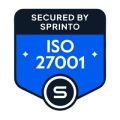Discover the essentials of the groundbreaking CSRD, right from requirements and reporting deadlines to potential roadblocks. Read ahead to know how Ecolibrium can simplify CSRD compliance and empower your organisation to lead in sustainable practices, making a positive impact.
As the climate crisis deepens, the accountability of corporations is under intense scrutiny. Within this context, the European Union’s (EU) groundbreaking Corporate Sustainability Reporting Directive (CSRD) emerges as a beacon of hope. In the EU’s endeavour to make greenwashing a relic of the past, the bloc proposed the ‘climate neutral’ claim ban in September 2023. The CSRD, too, is an audacious venture demanding corporations lay bare their sustainability and non-financial performance. It isn’t just a regulatory nudge; it’s a call for corporate transparency that resonates with investors, employees, consumers, and policymakers alike.
What is the CSRD?
Experts have said we have inaugurated the Environmental, Social, Governance (ESG’s) 2.0 era since last January. It is in this climate the EU’s CSRD took effect on 5 January 2023, adding to a plethora of global ESG and sustainability compliance. Adopted by the European Commission on 28 November 2022, the CSRD replaces and builds on its predecessor, the Non-Financial Reporting Directive (NFRD).1 It aims to improve and standardise ESG reporting in the bloc, with the regulations now expanding to 50,000 EU-based companies and 10,400 non-EU-based businesses with a presence in the EU.2
As part of the European Green Deal, the CSRD mandates that large or publicly listed companies issue routine reports addressing their social and environmental risks and vulnerabilities. The objective being – to empower investors, civil society groups, consumers, and other stakeholders to assess these companies’ sustainability. Through extensive disclosures, the CSRD aims to bring the focus back on corporate ESG efforts, enabling informed decision-making. Furthermore, it operates with other EU legislative initiatives, such as the EU Taxonomy and Sustainable Finance Disclosure Regulation (SFDR).
Reporting requirements –
Businesses under CSRD jurisdiction will report on the European Sustainability Reporting Standards (ESRS).3 In a nutshell, firms must reveal how sustainability issues affect their financial value (financial materiality) and broader influence on the economy, environment, and society (impact materiality). Companies have to provide qualitative and quantitative data on the following –
– Business model and strategy demonstrating resilience to sustainability risks, outlining opportunities and transition plans.
– Assessing double materiality: It entails understanding how a company influences and is influenced by sustainability risks such as climate change.
– Listing targets and the progress made to achieve them.
– Reporting on carbon emissions, including Scope 3 and information on value chain where required.
– Roles of administrative, management, and supervisory bodies and their requisite expertise to fulfil their functions.
– Principle risks, adverse impact and their management.
– Companies will also disclose information about intangible assets encompassing social, human, and intellectual capital.
Per the ESRS, the data presented in the reports must be verified annually by an independent audit firm accredited by each member state.
CSRD: who needs to comply and when?
– Starting 1 January 2024, large public-interest companies with over 500 employees, already subject to non-financial reporting, must adhere to CSRD rules, with reports due in 2025.
– For companies with more than 250 employees and €40 million in turnover or €20 million in total assets, not presently subject to non-financial reporting, the CSRD rules will come into effect from 1 January 2025. Their reports will be due in 2026.
– Listed small and medium-sized enterprises (SMEs) and other undertakings must comply with CSRD from 1 January 2026, with reports due in 2027. SMEs have the option to opt out until 2028.3
– CSRD extends to non-EU businesses with EU subsidiaries or branches, meeting specific financial criteria. These include a net turnover of over €150 million for subsidiaries and over €40 million for branches. Their reporting will start from 1 January 2029.4
However, it’s crucial to keep in mind that the regulations outlined in the NFRD will continue to apply until companies fully transition to CSRD compliance.
How to report?
The CSRD mandates the reporting of non-financial information within companies’ annual reports. A notable shift is the requirement to share this information using specific digital formats. Companies must utilise digital tags for machine-readability through the European Single Access Point (ESAP). This digitalisation is crucial for enhancing data accessibility, seamless analysis, and comparison within ESAP.
Potential roadblocks.
With these new regulations, various surveys suggest that many companies are underprepared for CSRD. A VinciWorks study indicates that 77% of ESG leaders and compliance managers out of 175 respondents have yet to commence CSRD preparations.5 Establishing CSRD compliance requires extensive data gathering, rigorous verification, cross-functional collaboration, and potentially new reporting systems. Meeting such requirements poses a hurdle for many companies, as ESG data is primarily unstructured, stored in multiple formats, and sourced from various systems and applications.6 As the clock keeps ticking, businesses need to adapt and begin preparations now.
The Ecolibrium guide to CSRD.
Ecolibrium’s AI-driven solution, SmartSense, assimilates 25 million data points daily to gather substantial data for your ESG reporting needs. With SmartSense, you can even track your Scope 3 (upstream and downstream) emissions, giving you a holistic view of your organisation’s carbon footprint.
But that’s just the tip of the iceberg!
SmartSense provides the foundation for your Net Zero Carbon strategy and simplifies and supports compliance reporting while equipping you to make data-driven decisions towards operational excellence.
To learn how we can help you navigate the territory of CSRD better, get in touch with us!
Bibliography
1 Editorial Staff. 2023. Navigating the new norms: Understanding SFDR, CSRD, and EU Taxonomy. Fintech Global [online] https://fintech.global/2023/09/22/navigating-the-new-norms-understanding-sfdr-csrd-and-eu-taxonomy/
2 Holger. 2023. At Least 10,000 Foreign Companies to Be Hit by EU Sustainability Rules. Wall Street Journal [online] https://www.wsj.com/articles/at-least-10-000-foreign-companies-to-be-hit-by-eu-sustainability-rules-307a1406
3 Editorial Staff. 2023. Sustainability rulebook: the Corporate Sustainability Reporting Directive. European Commission [online] https://www.ebu.ch/case-studies/open/legal-policy/eu-sustainability-rulebook-the-corporate-sustainability-reporting-directive
4 Editorial Staff. 2022. Council gives final green light to corporate sustainability reporting directive. European Council: Council of the European Union [online] https://www.consilium.europa.eu/en/press/press-releases/2022/11/28/council-gives-final-green-light-to-corporate-sustainability-reporting-directive/
5 Editorial Staff. 2023. VinciWorks’ survey reveals ESG leaders’ unpreparedness for upcoming CSRD reporting requirements. VinciWorks [online] https://vinciworks.com/blog/esg-leaders-unpreparedness-for-csrd-reporting/
6 Editorial Staff. 2023. ESG Reporting Is Already Required. Here’s What You Need To Know. Forbes [online] https://www.forbes.com/sites/jimdeloach/2023/09/13/esg-reporting-is-already-required-heres-what-you-need-to-know/?sh=33ecf2a61074








